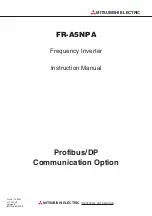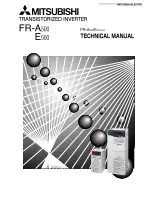
50
ADV200 WA • Quick start up guide - Specification and installation
5.3 Braking
There are various possible types of braking:
- via internal braking unit and external braking resistor (up to size ADV5550),
- via external braking unit (BUy, usable for all sizes),
- Injection of direct current from the Inverter into the motor (D.C. braking)
There are two essential differences between the two braking methods:
- A braking unit can be used for speed reduction (e.g.: from 1000 to 800 rpm),
whereas D.C. braking can only be usedfor braking to standstill.
- The energy in the drive is converted into heat in both cases. This conversion
takes place in a braking resistor encased in the braking unit. With D.C. brak-
ing, the energy is converted into heat in the motor itself, resulting in a further
rise in motor temperature.
5.3.1 Braking unit
Frequency-regulated asynchronous motors during hyper-synchronous or regen-
erative functioning behave as generators, recovering energy that flows through the
inverter bridge, in the intermediate circuit as continuous current.
This leads to an increase in the intermediate circuit voltage.
Braking units (internal to drive or external BUy) are therefore used in order to pre-
vent the DC voltage rising to an impermissible value. When used, these activate a
braking resistor (external to drive) that is connected in parallel to the capacitors of
the intermediate circuit. The feedback energy is converted to heat via the braking
resistor (R
br
), thus providing very short deceleration times and restricted four-
quadrant operation.
Note!
An optional BUy braking unit connected to terminals C and D can be used. For further details reference
should be made to the BUy manual.
















































